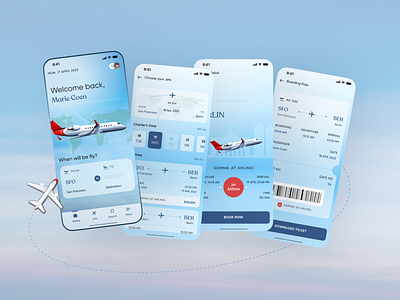adalbertokabu4
About adalbertokabu4
The Rise of Private Jet Flights: A Case Research on Luxurious And Accessibility
The private aviation industry has witnessed a exceptional transformation over the previous few many years, evolving from an exclusive realm reserved for the extremely-wealthy to a more accessible and diversified service catering to a broader demographic. This case research delves into the elements contributing to the rise of private jet flights, the altering perceptions round luxury journey, and the implications for the aviation market as a complete.
Historical Context
Historically, private jet travel was synonymous with luxury, often associated with excessive-profile celebrities, enterprise moguls, and political figures. The advent of the primary business jets within the 1960s, such as the Learjet 23, marked the start of a new period in air travel. However, it wasn’t till the late nineteen nineties and early 2000s that the market started to develop significantly, pushed by developments in technology, elevated wealth amongst the global elite, and the rise of company travel.

Market Dynamics
The private jet market is characterized by several key dynamics:
- Increased Demand: The demand for private jet travel has surged lately, significantly amongst enterprise travelers who seek efficiency and adaptability. According to the National Business Aviation Association (NBAA), the variety of business aircraft within the U.S. alone has grown steadily, with over 20,000 jets at present registered.
- Fractional Possession and Jet Cards: The introduction of fractional ownership programs and jet card memberships has democratized entry to private aviation. If you have any type of inquiries relating to where and exactly how to utilize Privatejetscharter.Review, you could call us at our page. Companies like NetJets and Flexjet enable individuals and businesses to purchase shares in a jet or buy flight hours, considerably decreasing the boundaries to entry for private travel.
- Charter Companies: The rise of on-line platforms and apps that facilitate on-demand charter services has additional transformed the business. Startups like Blade, JetSmarter, and Wheels Up have capitalized on know-how to streamline the booking course of, making private jet travel more handy and accessible.
- COVID-19 Influence: The COVID-19 pandemic dramatically altered journey behavior, with many travelers seeking alternatives to business airlines as a result of well being considerations. Private jet travel skilled a resurgence as individuals and companies prioritized safety and privateness.
Demographic Shifts
The demographic profile of private jet travelers is also evolving. Traditionally dominated by older, affluent people, the market is now seeing an inflow of youthful travelers, significantly millennials and Technology Z. These groups are extra inclined to value experiences over possessions, leading to a growing interest in luxury journey choices, together with private flights.
Moreover, the rise of remote work has enabled professionals to travel more freely, typically combining work and leisure in a manner that was beforehand much less widespread. This trend has resulted in a rise in demand for private jets amongst entrepreneurs and distant staff searching for to journey to a number of locations with out the constraints of commercial flight schedules.
Environmental Issues
As the private aviation trade grows, so do issues relating to its environmental influence. The carbon footprint of private jets is considerably increased per passenger than that of economic flights. In response, several companies are exploring sustainable aviation options, such as the development of electric and hybrid aircraft, as well as using sustainable aviation fuels (SAFs).
Trade leaders are increasingly recognizing the importance of sustainability in maintaining a optimistic public picture and meeting the expectations of environmentally acutely aware customers. Initiatives comparable to carbon offset packages have gotten more widespread, allowing travelers to mitigate the environmental affect of their flights.
The future of Private Jet Travel
Wanting forward, the future of private jet travel appears promising, with a number of trends likely to shape the trade:
- Technological Advancements: Innovations in aircraft design, fuel effectivity, and in-flight expertise are expected to enhance the overall journey expertise. The development of supersonic jets and urban air mobility options might revolutionize the best way folks travel in the coming years.
- Increased Competitors: As the market continues to grow, competition among private jet service providers will intensify. This could result in improved services, better pricing, and extra choices for shoppers.
- Regulatory Changes: The aviation business is topic to stringent regulations, and modifications in authorities policies regarding air journey may impression the private jet market. Advocacy for extra favorable regulations for private aviation could play a vital function in shaping the industry’s future.
- Focus on Wellness and Experience: Post-pandemic, there is a heightened give attention to wellness and personalized experiences in journey. Private jet companies are seemingly to reinforce their choices by providing tailored providers, luxurious amenities, and wellness-centered in-flight experiences.
Conclusion
The rise of private jet flights represents a major shift within the landscape of air travel, driven by altering client preferences, technological developments, and a growing demand for flexibility and efficiency. While the industry faces challenges related to sustainability and competition, the longer term looks vivid for private aviation because it continues to evolve and adapt to the needs of fashionable travelers. As accessibility increases and new applied sciences emerge, private jet travel might change into an even more integral part of the travel expertise for a wider audience, transcending its historical affiliation with exclusivity and luxury.
No listing found.

